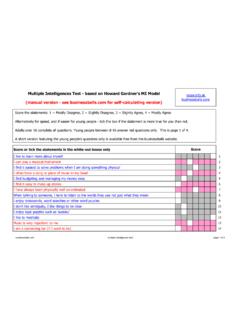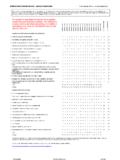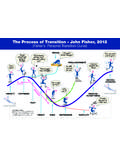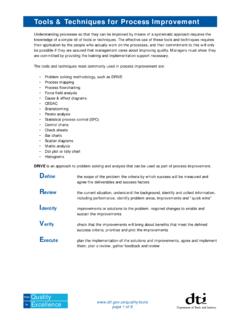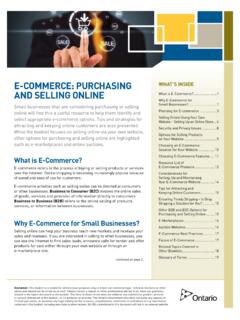Transcription of Performance Measurement - BusinessBalls.com
1 ToFromExcellenceQualityIntroductionPerfo rmance Measurement is a fundamental building block of TQM and a total quality , organisations have always measured Performance in some way through the financialperformance, be this success by profit or failure through , traditional Performance measures, based on cost accounting information, provide little to supportorganisations on their quality journey, because they do not map process Performance and improvements seenby the customer. In a successful total quality organisation, Performance will be measured by the improvementsseen by the customer as well as by the results delivered to other stakeholders, such as the shareholders.
2 This section covers why measuring Performance is important. This is followed by a description of cost ofquality Measurement , which has been used for many years to drive improvement activities and raiseawareness of the effect of quality problems in an organisation. A simple Performance Measurement framework is outlined, which includes more than just measuring, butalso defining and understanding metrics , collecting and analysing data, then prioritising and takingimprovement actions. A description of the balanced scorecard approach is also measure Performance ? When you can measure what you are speaking about and express it in numbers, you know something about it.
3 Kelvin You cannot manage what you cannot measure .Anon These are two often-quoted statements that demonstrate why Measurement is important. Yet it issurprising that organisations find the area of Measurement so difficult to the cycle of never-ending improvement, Performance Measurement plays an important role in: Identifying and tracking progress against organisational goals Identifying opportunities for improvement Comparing Performance against both internal and external standardsReviewing the Performance of an organisation is also an important step when formulating the direction ofthe strategic activities.
4 It is important to know where the strengths and weaknesses of the organisation lie,and as part of the Plan Do Check Act cycle, Measurement plays a key role in quality and productivityimprovement activities. The main reasons it is needed are: To ensure customer requirements havebeen met To be able to set sensible objectivesand comply with them To provide standardsfor establishing comparisons To provide visibilityand a scoreboard for people to monitortheir own Performance level To highlight quality problemsand determine areas for priority attention To provide feedbackfor driving the improvement effortIt is also important to understand the impact of TQM on improvements in business Performance .
5 Onsustaining current Performance and reducing any possible decline in 1 of 7toFromExcellenceQualityCost of quality measurementThe cost of doing a quality job, conducting quality improvements and achieving goals must be carefullymanaged, so that the long-term effect of quality on the organisation is a desirable one. These costs mustbe a true measure of the quality effort, and are best determined from an analysis of the costs of an analysis provides: A method of assessing the effectiveness of the management of quality A means of determining problem areas, opportunities, savings and action prioritiesCost of quality is also an important communication tool.
6 Crosby demonstrated what a powerful tool it couldbe to raise awareness of the importance of quality. He referred to the measure as the Price of Non-conformance , and argued that organisations chose to pay for poor activities that will incur costs may be split into prevention costs, appraisal costs and failurecosts. Prevention costsare associated with the design, implementation and maintenance of the TQM are planned and incurred before actual operation, and could include: Product or service requirements setting specifications for incoming materials, processes, finished products/services Quality planning creation of plans for quality, reliability, operational, production, inspection Quality assurance creation and maintenance of the quality system Training development, preparation and maintenance of programmesAppraisal costsare associated with the suppliers and customers evaluation of purchased materials,processes, products and services to ensure they conform to specifications.
7 They could include: Verification checking of incoming material, process set-up, products against agreed specifications Quality audits check that the quality system is functioning correctly Vendor rating assessment and approval of suppliers, for products and servicesFailure costscan be split into those resulting from internal and external failure costsoccur when the results of work fail to reach designed quality standards and aredetected before they are transferred to the customer. They could include: Waste doing unnecessary work or holding stocks as a result of errors, poor organisation or communication Scrap defective product or material that cannot be repaired, used or sold Rework or rectification the correction of defective material or errors Failure analysis activity required to establish the causes of internal product or service failureExternal failure costsoccur when the products or services fail to reach design quality standards, but arenot detected until after transfer to the customer.
8 They could include: Repairs and servicing of returned products or those in the field Warranty claims failed product that are replaced or services re-performed under a guarantee Complaints all work and costs associated with handling and servicing customers complaints Returns handling and investigation of rejected or recalled products, including transport 2 of 7toFromExcellenceQualityThe relationship between the quality-related costs of prevention, appraisal and failure (the P-A-F model) andincreasing quality awareness and improvement in the organisation is shown graphically as.
9 Expenditure on prevention and improvement activities is an investment from which a return is quality improvements should result in a future stream of benefits, such as: Reduced failure costs Lower appraisal costs Increased market share Increased customer base More productive workforceMany organisations will have true quality related costs as high as 15% of their sales revenue, and effectivequality improvement programmes can reduce this substantially, thus making a direct contribution to alternative to the P-A-F model is the Process Cost Model, which categorises the cost of quality (COQ)into the cost of conformance (COC) and the cost of non-conformance (CONC), where.
10 COQ = COC + CONCCOCis the process cost of providing products/services to the required standards, by a given specifiedprocess in the most effective the failure cost associated with a process not being operated to the requirements, or the cost dueto the variability of the process. FailureAppraisalPreventionQuality awareness and improvementQuality related 3 of 7toFromExcellenceQualityTo identify, understand and reap the cost benefits of quality improvement activities the followingfundamental steps should be included in the approach: Management commitment to finding the true costs of quality A quality costing system to identify, report and analyse quality related cost A quality related cost management team responsible for direction and co-ordination of the quality costing system The inclusion of quality costing training to enable everyone to understand the financial implications ofquality improvement The presentation of significant costs of quality to all personnel to promote the approach Introduction of schemes to achieve maximum participation of all employeesThe system, once established.

